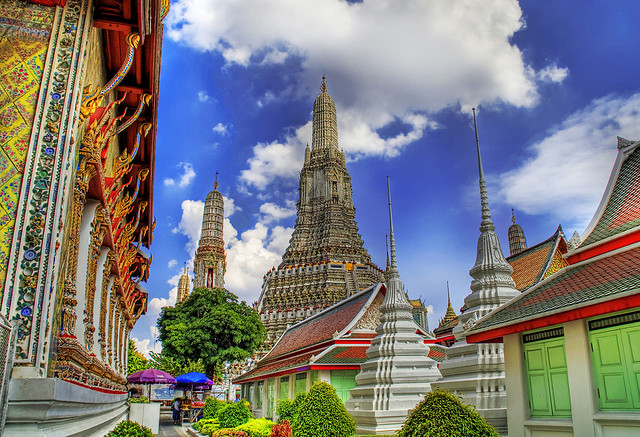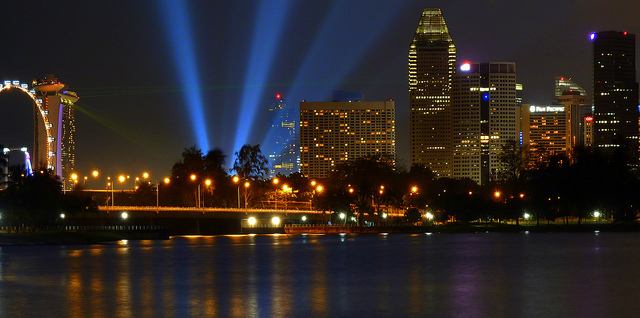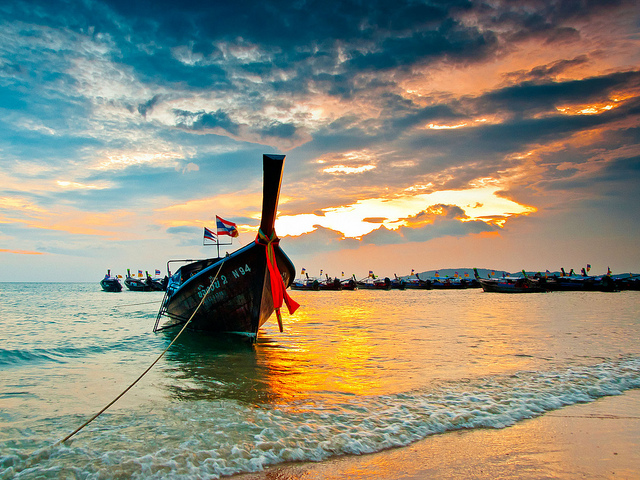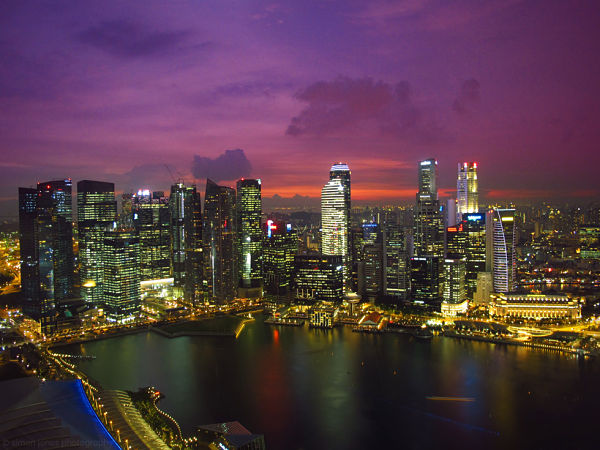More than just a beautiful decoration in local parks, flowers in Southeast Asia are significant in both culture and religion. Worldwide, red roses have come to represent passion and romantic love; likewise, in Southeast Asia, there are many other flowers that symbolize emotions, characteristics or ideals. The blooms you see tended on balconies in the city or teeming along jungle paths may also be used in rituals or prayer offerings, form the basis for traditional medicine treatments, or be a food source.
Golden Shower Tree
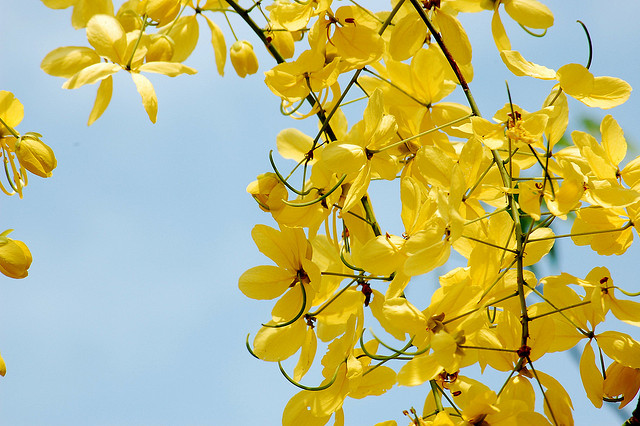
In Thailand, for example, the cassia fistula is an important ornamental plant. Also called the ratchaphurek, or golden shower tree, it has abundant sprays of hanging yellow blossoms. It’s the national flower of Thailand because the golden flowers symbolize Thai royalty. Yellow is a special color in Thailand, and is the personal color of the King because he was born on a Monday. The flowers from this tree are used in Ayurvedic medicine to help stop diseases.
Vanda Miss Joaquim
Meanwhile, Singapore’s national bloom has a name that sounds like it could belong to a beauty pageant winner. Really though, this bright purple, distinctively shaped orchid was named after its breeder, Agnes Joaquim. Joaquim was the daughter of an influential Armenian family living in Singapore in the mid 1800s. She loved gardening and specialized in orchids, and won many prizes for her hybrids. This blossom won first prize at the 1899 show, but Joaquim didn’t witness the flower’s real rise to stardom. A great representative of something truly Singaporean, it was made the national flower in 1981. In ancient Chinese culture, orchids represented friendship, perfection, femininity and elegance. Orchids are sometimes incorporated into herbal remedies in Chinese medicine.
Sampaguita Jasmine
This islands of the archipelago that makes up the Philippines have long been a hub of international trade. The country’s national flower is a result of that–the Sampaguita Jasmine was brought to the Philippines in 1700s.
The simple, sweet-smelling flower represents purity and strength. Garlands of Sampaguita are often used to decorate religious shrines and are given gifts for special guests. Homeowners often plant jasmine because it blooms all year and perfumes the air when the blossoms open at night. Extract from the flower is also used for making perfume and fragrant tea.
Rafflesia Arnoldii
Rafflesia Arnoldii is one of the world’s most striking flowers. It produces the largest flowers on earth, but it doesn’t have a correspondingly beautiful aroma. In fact, it’s sometimes known as the “corpse flower” because the one-meter diameter blossoms smell like decay. Despite their gigantic flowers, Rafflesia Arnoldii are hard to find in the wild; they are very rare. Rafflesia don’t have any leaves or roots, and instead grow like mushrooms on the forest floor of Sumatra and Borneo. It is one of Indonesia’s three national flowers, and, in local traditional medicine, the petals are used to help women recover after childbirth.
Lotus
In Vietnam, two flowers in particular are important in art and culture: the lotus and the chrysanthemum. Of these, the lotus has a prominent place in temples around Southeast Asia due to its ties to Buddhist tradition. Because the lotus roots in the mud at the bottom of ponds and rivers, yet holds its pure blossoms above the water, it is said to represent enlightenment, purification, and even rebirth. Lotus roots and seeds can be eaten, and many parts of the plant are used in traditional medicines around Asia.
Chrysanthemum
Chrysanthemums, on the other hand, are so widely used in the world that they may not seem like an exotic flower to many travelers. However, they were first cultivated in China, and it’s possible that the significance of chrysanthemums in Vietnam and elsewhere in Southeast Asia is due to Chinese influence. Dried chrysanthemums are drunk in a cooling tea, and incorporated into soups and other dishes.
